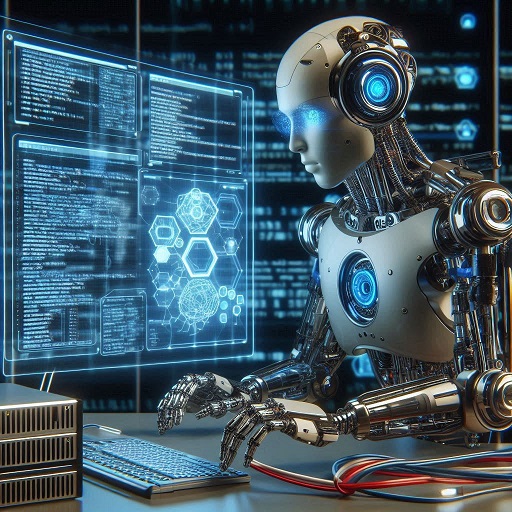Robot Operating Systems (ROS) provide a standardized, modular architecture for developing robotic applications. ROS acts as a flexible middleware, enabling easier programming, integration, and communication between multiple software components. First developed by Willow Garage, ROS has grown into a widely adopted platform, supporting thousands of robotics applications globally.
ROS is a flexible framework for writing software that simplifies the development of complex robotic systems by offering a wide array of tools, libraries, and conventions. From perception and motion control to data analysis, ROS enables developers to build robust robotic solutions with reduced time and resources.

ROS has been instrumental in driving robotics innovation by providing a comprehensive platform that caters to various industries. By democratizing access to advanced tools and resources, ROS has fostered collaboration and accelerated technological advancements in automation.
Core Features of ROS
Modular Architecture
The modular design of ROS enables developers to build scalable systems by integrating specialized components as needed. Each module, or “node,” communicates with others via ROS protocols, allowing a distributed computing approach that enhances system flexibility and resilience.
Cross-Platform Compatibility
ROS’s compatibility with various operating systems, including Linux, Windows, and MacOS, enhances its versatility. This cross-platform support allows ROS to be used in diverse environments, from academic research to industrial applications.
Community Support and Open-Source Benefits
With its extensive open-source community, ROS offers developers an ever-growing repository of shared resources, documentation, and troubleshooting assistance. The collaborative nature of the ROS ecosystem makes it particularly valuable for continuous improvement and innovation.
Applications of Robot Operating Systems in Various Industries
Manufacturing and Industrial Automation
In manufacturing, ROS is used to automate processes such as assembly, packaging, and quality inspection. By enabling robots to communicate and coordinate tasks, ROS significantly boosts productivity and operational efficiency.
Healthcare and Medical Robotics
ROS plays a critical role in medical robotics, powering surgical robots, rehabilitation devices, and robotic exoskeletons. ROS’s precision control and data processing capabilities enhance the performance and reliability of these medical technologies.
Agricultural Automation
ROS is making waves in agriculture by enabling robots that can handle labor-intensive tasks like harvesting, planting, and monitoring crop health. Agricultural robots built on ROS improve efficiency while reducing the reliance on manual labor.
Logistics and Supply Chain Management
ROS facilitates automation in logistics through robotic systems that can autonomously navigate warehouses, transport goods, and optimize inventory management. This application reduces operational costs and speeds up supply chain processes.
Autonomous Vehicles and Drones
ROS is widely used in the development of autonomous vehicles and drones, where it aids in navigation, object detection, and environmental mapping. The open-source nature of ROS enables rapid innovation and testing in this fast-evolving field.
The Growth of the Global Robot Operating System Market
The global Robot Operating System (ROS) market is valued at USD 581 million in 2023 and is expected to reach USD 1,082 million by 2028, with a compound annual growth rate (CAGR) of 13.2% over the forecast period of 2023 to 2028. This growth is driven by the rising adoption of ROS in various industries, particularly in the automotive sector, where demand for advanced automation and robotics solutions continues to increase.
Download PDF Brochure @ https://www.marketsandmarkets.com/pdfdownloadNew.asp?id=19870751
Key Benefits of Using ROS
Flexibility in Development
ROS’s modular design allows developers to customize applications according to specific project requirements, making it ideal for diverse use cases.
Cost-Effectiveness Through Open Source
ROS being open-source reduces software development costs, making high-quality robotic solutions more accessible to smaller organizations and startups.
Accelerating Prototyping and Testing
With access to pre-built libraries and tools, ROS streamlines the prototyping and testing phases, enabling faster time-to-market for robotic applications.
Challenges in Implementing ROS
Complexity of Setup and Maintenance
Setting up ROS can be complex due to the intricacies involved in managing different libraries, tools, and dependencies. Regular maintenance is necessary to ensure stability and compatibility across components.
Security and Privacy Concerns
Since ROS is open-source, it can be vulnerable to security threats. Organizations need to implement additional layers of security to safeguard their robotic systems.
Dependency on Open-Source Libraries and Stability
While ROS’s reliance on open-source libraries is beneficial, it can also pose challenges related to library compatibility and software updates.
Future of ROS and Emerging Trends
ROS 2 and Real-Time Applications
ROS 2 addresses limitations of the original ROS, providing enhanced support for real-time applications and enabling its use in safety-critical environments.
Advancements in AI and Machine Learning with ROS
The integration of AI and machine learning with ROS is unlocking new possibilities in robotics, such as advanced perception, adaptive control, and autonomous decision-making.
ROS in Collaborative and Cobotic Solutions
As collaborative robots (cobots) become more prevalent, ROS is being adapted for cobotic solutions that allow robots and humans to work side-by-side, enhancing productivity and safety.
The applications of Robot Operating Systems (ROS) are revolutionizing various industries, from manufacturing to healthcare. By providing a flexible and powerful framework for robotic development, ROS is helping to shape the future of automation and technology.
Frequently Asked Questions (FAQs)
1. What is a Robot Operating System (ROS)?
ROS is an open-source framework that provides tools, libraries, and conventions for building robotic applications.
2. How does ROS benefit the robotics industry?
ROS standardizes robotic software development, making it easier to design complex systems and facilitating collaboration within the robotics community.
3. Which industries benefit most from ROS?
Manufacturing, healthcare, agriculture, logistics, and autonomous vehicles are among the industries that benefit significantly from ROS.
4. What are the challenges of using ROS?
Challenges include the complexity of setup, security concerns, and dependency on open-source libraries.
5. How is ROS 2 different from ROS 1?
ROS 2 introduces real-time capabilities, making it more suitable for safety-critical applications and enabling broader industry adoption.
6. Can ROS be used in autonomous vehicles?
Yes, ROS is commonly used in autonomous vehicles for navigation, object detection, and environmental mapping.

